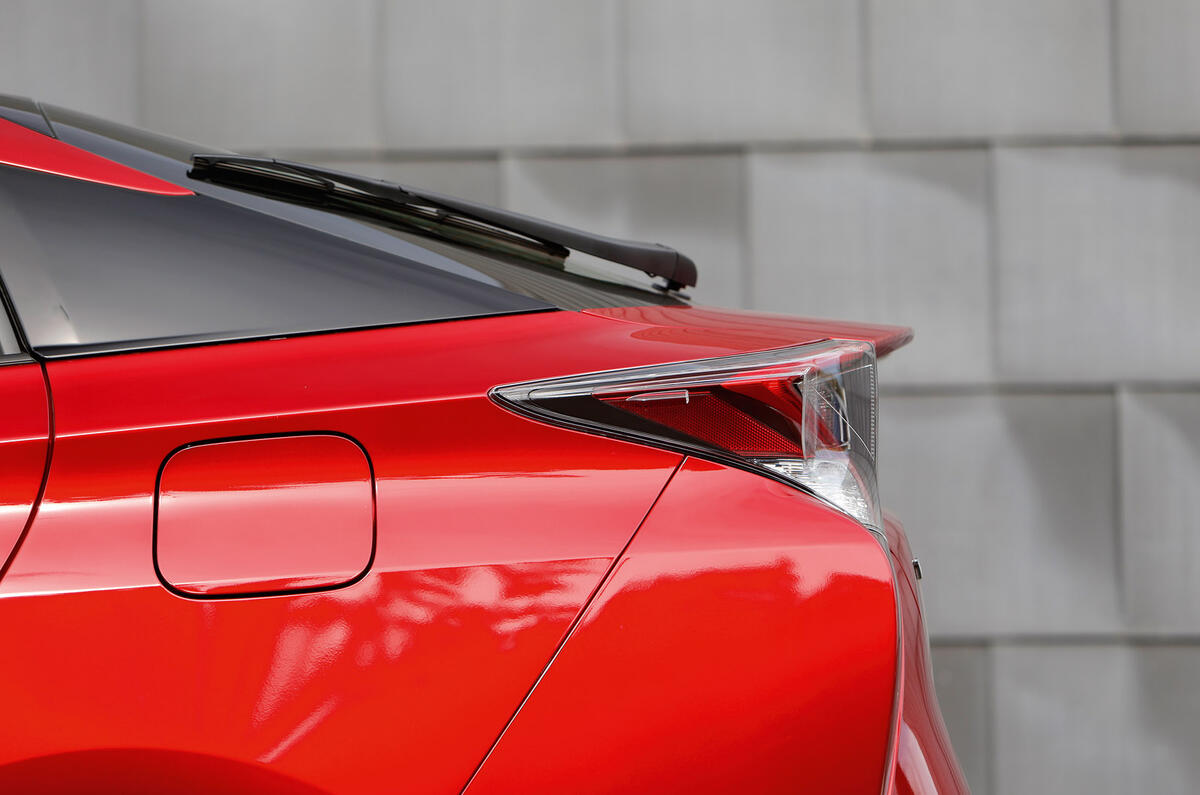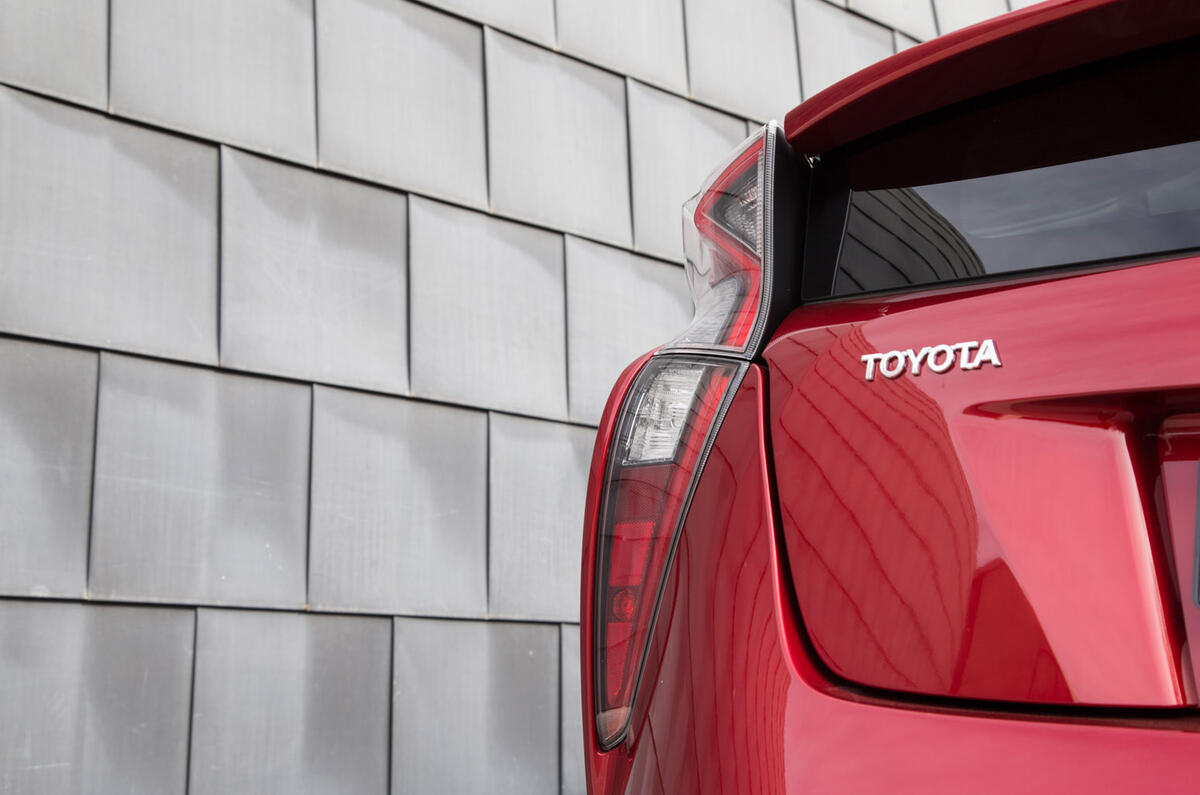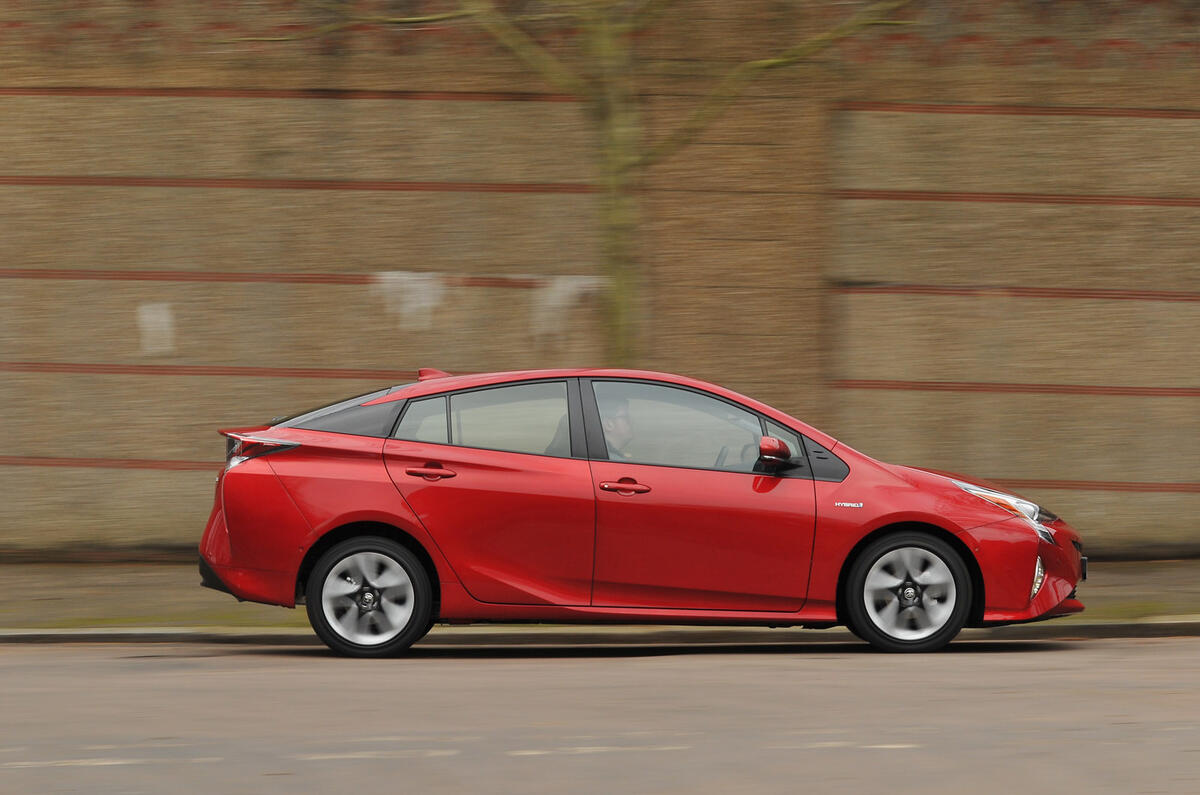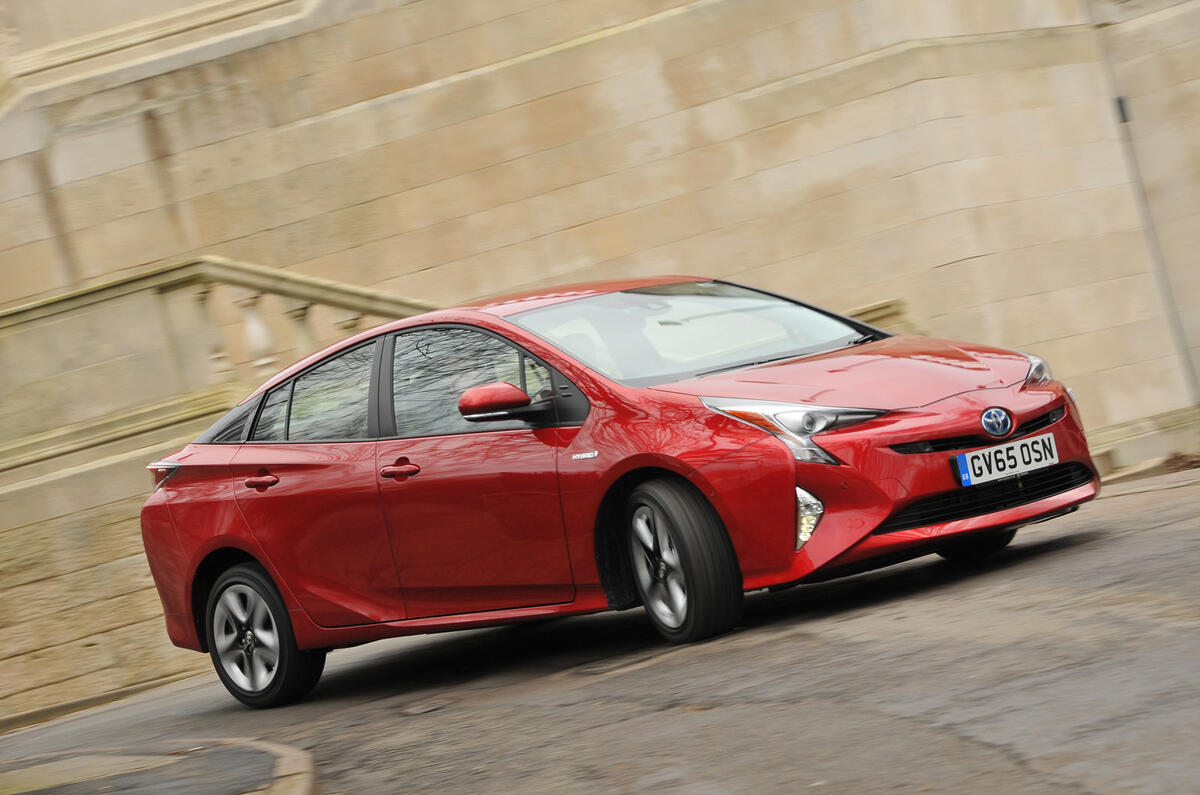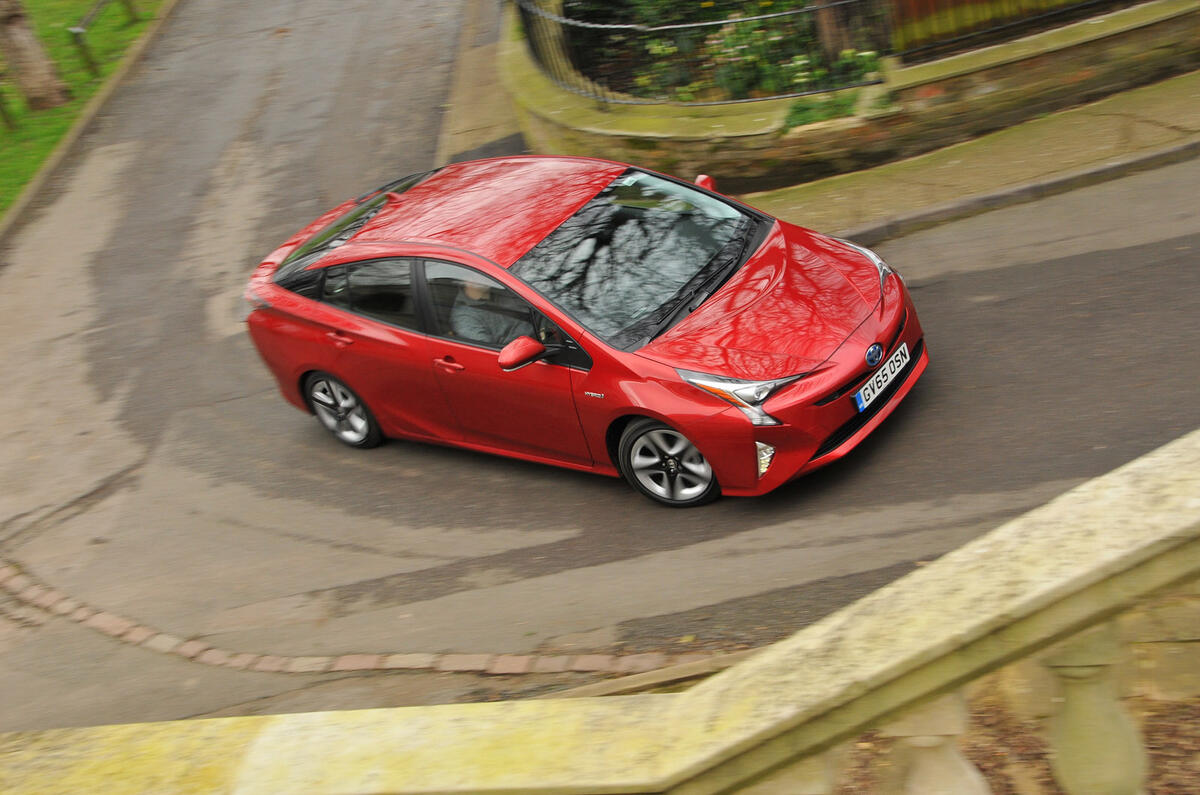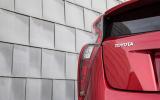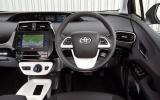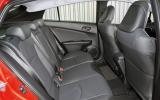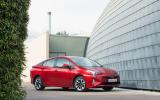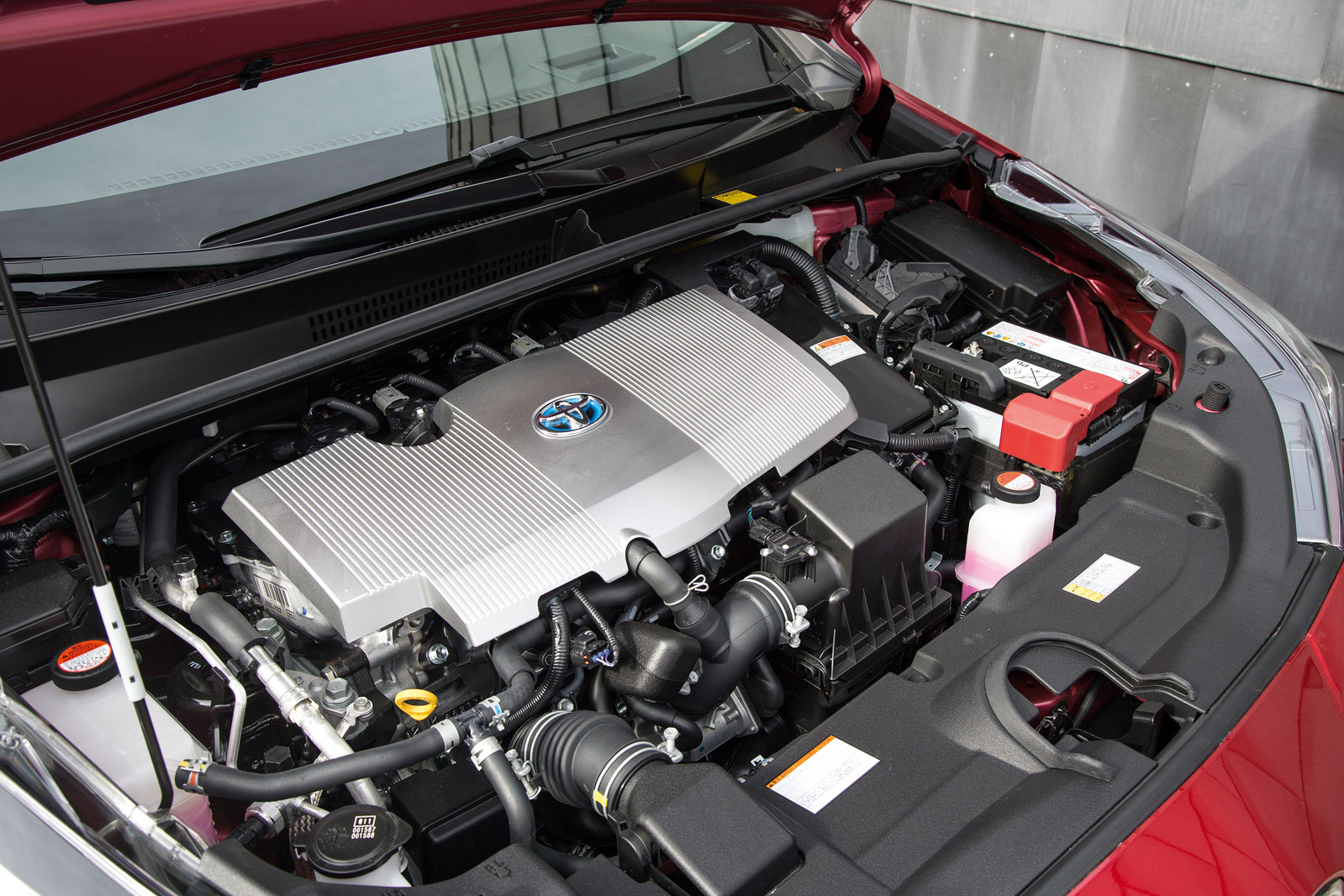Spacious, solidly built and well equipped, the Prius’s cabin does the car plenty of credit. For the first-time driver getting acquainted, it was always one of the first clues that you were about to drive something much more relaxing and advanced than an ordinary economy car.
And in the new-generation version, that sense of cocooning simplicity, calmness and technological sophistication has increased by quite a large increment.
Those upgrading from the previous Toyota Prius will immediately notice how much lower they’re sitting in the wide and comfortable driver’s seat, and how much smaller is the wheel rim in front of them.
They’ll be familiar with the car’s unconventional instrumentation: nothing directly ahead but a small head-up display, with a digital speedo and a much improved multi-function trip computer housed in a wide binnacle spanning the centre of the dashboard.
Instead of a rev counter, one of the trip computer screens provides a power usage meter, which may seem like a gimmick but is actually useful enough to help you gauge how much electric oomph is available at urban speeds – and thereby boost your economy return.
So the layout and interface logic are broadly unchanged. Fascia volumes have decreased, though, and, together with a lower scuttle, contribute to a pleasantly airy and spacious ambience in the front of the car.
Toyota doesn’t skimp on its equipment in this department, with buyers given the choice of four trims to choose from - Active, Business Edition, Business Edition Plus and Excel. Entry-level models get 15in alloy wheels, LED headlights, adaptive cruise control, lane departure warning, road sign recognition and heated and folding door mirrors as standard on the outside, while inside there is Toyota's Touch 2 infotainment system with a reversing camera and a 7.0in touchscreen display.
Upgrade to the fleet-friendly Business Edition trim and the Prius gains heated front seats, a wireless phone charging cradle, a head-up display and blind spot monitoring to an already generous package, while opting for the Edition Plus adds 17in alloy wheels, parking sensors and a self-parking assistance.
Topping the standard Prius trim levels is Excel which adorns the hybrid with luxuries such as automatic wipers, a JBL premium sound system, sat nav, wi-fi connectivity, and front foglights.
Plug-in hybrid variants are only available in Business Edition Plus, which includes sat nav, climate control, keyless entry and ignition among Toyota's Safety Sense technology, and Excel, which get a leather upholstery, a JBL sound system, intelligent park assist and parking sensors included with the ability to plug your Prius in to charge.
Toyota's Touch2 system can be upgraded to include navigation and some online connectivity features, as on our test car’s trim level, and upgraded again at an additional cost of £950 to Toyota’s ‘Touch 2 with Go Plus’ system, which will read out your text messages and includes a wireless hotspot.
Oddly, though, the top-of-the-range system uses the same screen size and display resolution as the entry-level one — and it’s not a great advert for either. Navigation mapping can be crowded and low on detail, and the system doesn’t respond to pinch or swipe finger movements when you want to zoom or change modes.
A wireless phone charger is standard on all but entry-level cars, working via the Qi system. If your handset isn’t compatible, you can probably get an expansion battery case for it that’ll solve the problem.
Some pudgy tactile mouldings and glossy decorative elements add a quietly classy note in places.
In the rear, leg room is generous, although head room is still limited for larger adults as a consequence of the aerodynamic descending roofline above you and the battery and fuel tank packaged below. But assuming that your head isn’t bothered by the roofline, you’ll feel well provided for in the back, with a 12V power outlet available between the front seats, good-sized bottle holders in the doors and equally sizable cupholders in the armrest.
The boot is a good size. Having swollen to 343 litres below the window line, it offers space nearly on a par with its conventional hatchback rivals – in theory. In practice, it’s both wide and long and swallows bulky items particularly easily, although it’s shallower than you might expect.









